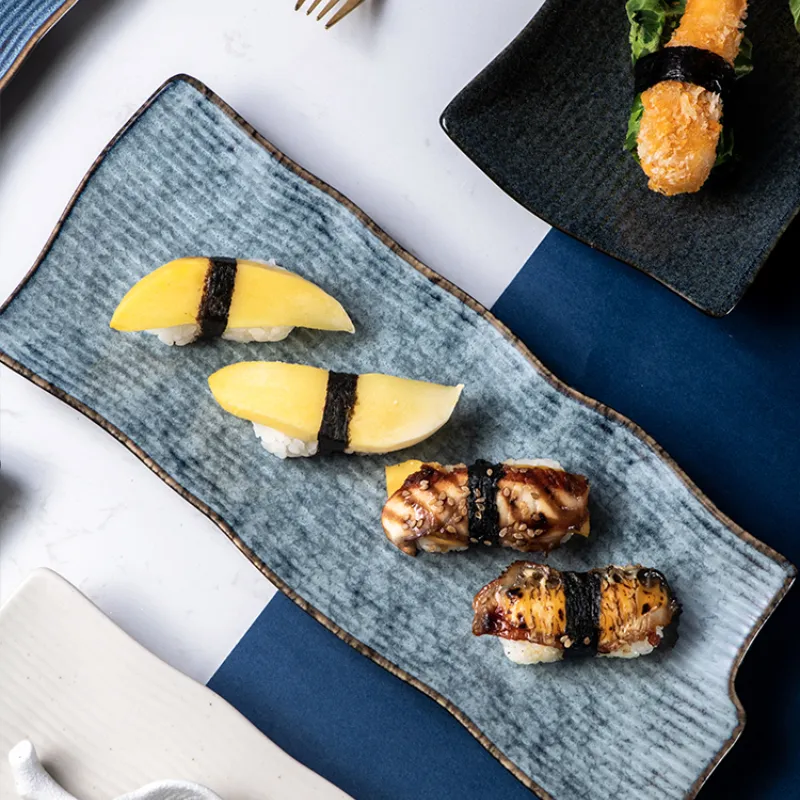
Asian cuisine is celebrated for its diverse flavors, vibrant colors, and intricate presentation. To truly appreciate the art of Asian cooking, selecting the right plates is essential. These not only serve as functional dinnerware but also play a significant role in enhancing the dining experience by showcasing the beauty of the dishes. In this comprehensive guide, we’ll explore the world of Asian plates, covering factors such as types, materials, designs, sizes, and care, to help you choose the perfect plates that elevate your Asian dining adventures.
The Importance of Choosing the Right Asian Plates
Before delving into the specifics of choosing plates, it’s crucial to understand why the selection process is important:
- Aesthetics: Asian cuisine is known for its visually stunning presentation. The right plates can enhance the aesthetics of the dishes, making them more appealing and appetizing.
- Authenticity: Using authentic Asian plates can help create an authentic dining experience, allowing you to connect more deeply with the cuisine’s cultural roots.
- Functionality: Different types of Asian dishes require specific plate designs and sizes to accommodate their unique characteristics, ensuring that the food is presented and served optimally.
- Cultural Significance: Asian plates often carry cultural significance and symbolism. Understanding these aspects can add depth to your appreciation of the cuisine.
Now, let’s explore the factors to consider when selecting the perfect plates.
Factors to Consider When Choosing Asian Plates
1. Types of Asian Plates
Asian cuisine encompasses a wide variety of dishes, each with its own unique presentation and serving requirements. Therefore, it’s essential to choose plates that are well-suited to the type of dishes you plan to serve. Here are some common types of Asian plates:
- Rice Bowls: Rice bowls are a staple in Asian dining, used for serving rice as a side dish or as a base for various toppings. They are typically round and shallow, with a wide rim.
- Noodle Bowls: Noodle bowls are deeper than rice bowls and have a broader shape to accommodate noodles and broth. They often come with lids or covers to keep the contents hot.
- Sushi Plates: Sushi plates are rectangular and elongated, designed specifically for serving sushi rolls and sashimi. They may have sections for soy sauce, pickled ginger, and wasabi.
- Dinner Plates: Dinner plates in Asian cuisine vary in size and shape, depending on the region and the dishes they are meant to serve. They can range from small and round to large and oval.
- Dim Sum Plates: Dim sum plates are small, round, and typically stackable. They are used for serving bite-sized dim sum dishes like dumplings and buns.
- Tea Plates: Tea plates are small, often square or rectangular, and used for serving small snacks or desserts alongside tea.
Consider the types of Asian dishes you enjoy preparing and serving to determine the appropriate types of plates to include in your collection.
2. Materials
Asian plates come in a variety of materials, each with its own unique characteristics and aesthetic appeal. Common materials for it include:
- Porcelain: Porcelain plates are elegant and versatile. They are thin and delicate, often featuring intricate designs or patterns. Porcelain plates are excellent for showcasing the colors and textures of Asian dishes.
- Stoneware: Stoneware plates are durable and have a more rustic appearance. They are thicker and heavier than porcelain, making them suitable for hearty dishes.
- Ceramic: Ceramic plates come in various styles, from traditional to modern. They are versatile and often feature hand-painted designs. Ceramic plates are well-suited for both everyday use and special occasions.
- Melamine: Melamine plates are lightweight, durable, and resistant to breakage. They are a practical choice for outdoor dining or casual settings.
- Wood: Wooden plates, often made from bamboo, offer a natural and eco-friendly option. They are commonly used for serving sushi and other traditional Asian dishes.
Choose the material that best complements your dining style, preferences, and the types of Asian dishes you plan to serve. Keep in mind that some materials may require specific care instructions.
3. Designs and Patterns
Asian plates often feature intricate designs, patterns, and motifs that reflect the culture and traditions of the region they originate from. Some common design elements include:
- Floral Motifs: Floral patterns, such as cherry blossoms or lotus flowers, are prevalent in Asian plate designs. They symbolize beauty, renewal, and purity.
- Landscape Scenes: Plates with landscape scenes, such as mountains, rivers, or pagodas, are inspired by traditional Asian art and convey a sense of tranquility and harmony with nature.
- Symbols and Calligraphy: Plates adorned with symbols, characters, or calligraphy often carry deeper meanings related to luck, prosperity, or wisdom.
- Geometric Patterns: Geometric patterns, such as lattice or waves, can add texture and visual interest to Asian plates.
When choosing, consider the design elements that resonate with you and align with the cultural influences you wish to embrace in your dining experience.
4. Sizes and Shapes
The size and shape of Asian plates should complement the specific dishes you plan to serve. Here are some considerations:
- Size: Choose plates that are appropriately sized for the dishes they will hold. Smaller plates are ideal for appetizers and desserts, while larger plates are suitable for main courses.
- Shape: Consider the shape of the plates in relation to the presentation of the dishes. Round plates are versatile and work well for many types of cuisine. Rectangular or square plates can add a contemporary touch and are often used for sushi.
- Stackability: If space is a concern, opt for plates that can be easily stacked or nested for efficient storage.
- Rim or No Rim: Some plates have a raised rim, which can help contain saucy dishes or prevent spills. Others have a flat, rimless design for a minimalist look.
Think about the practicality and aesthetics of the sizes and shapes that best suit your culinary creations and table settings.
5. Occasion and Use
Consider the occasions and frequency of use for your Asian plates:
- Everyday Dining: If you plan to use it regularly, prioritize durability and ease of maintenance. Melamine or stoneware plates may be practical choices.
- Special Occasions: For formal gatherings or special occasions, invest in high-quality porcelain or ceramic plates with intricate designs to create an elegant table setting.
- Casual Dining: If you enjoy casual, family-style dining, opt for a mix of styles and materials that reflect your personal taste.
- Outdoor Dining: Melamine or bamboo plates are excellent choices for picnics, barbecues, or outdoor gatherings.
6. Care and Maintenance
Proper care ensures the longevity and beauty of your Asian plates:
- Hand Washing: Many, especially those with delicate designs, are best washed by hand using mild dish soap and a soft sponge or cloth.
- Avoid Abrasives: Avoid abrasive scouring pads or harsh detergents that can scratch or damage the surface of your plates.
- Stacking: When stacking plates, place a soft, non-abrasive liner, such as a paper towel or cloth, between them to prevent scratching.
- Storage: Store your Asian plates in a cool, dry place, away from direct sunlight, extreme temperatures, and moisture.
- Microwave and Oven Use: Check the manufacturer’s instructions to determine if your plates are microwave or oven safe. Some materials, like melamine, may not be suitable for high heat.
In Conclusion
Choosing the perfect Asian plates is an exciting journey that allows you to appreciate the artistry of Asian cuisine on a whole new level. By considering factors such as plate types, materials, designs, sizes, occasion, and care, you can curate a collection of plates that enhance your dining experience and reflect your appreciation for this rich culinary tradition. Whether you’re hosting a formal dinner, enjoying a cozy family meal, or simply savoring your favorite Asian dishes, the right plates will undoubtedly elevate the aesthetics and authenticity of your dining adventures.


